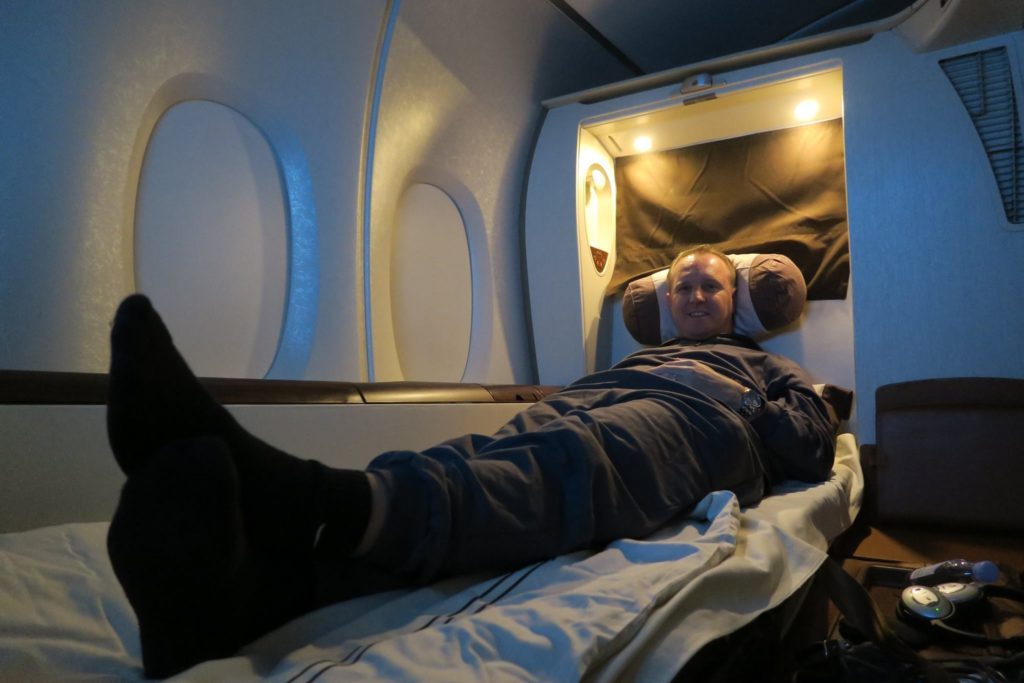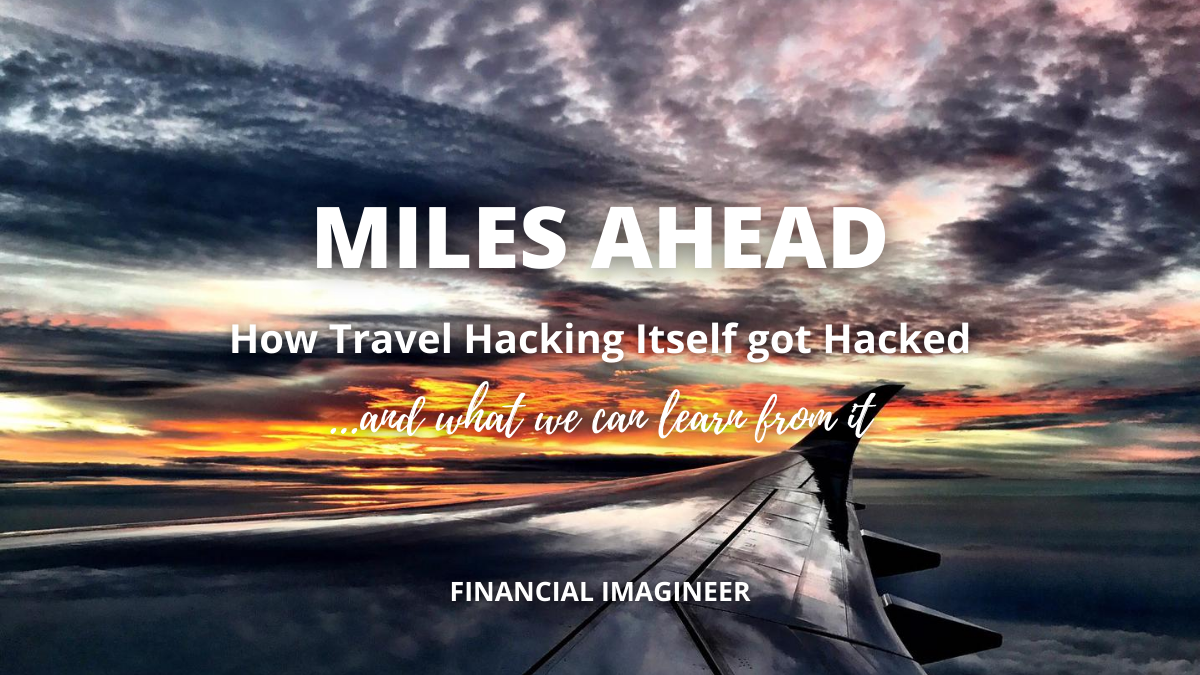How Travel Hacking Itself got Hacked – and what we can learn from it.
Many airline passengers whose trips got cancelled some months ago are still waiting for their ticket refunds as carriers and travel agencies are running low on liquidity. As of August 2020, airlines are withholding billions in refunds – that’s Billions with a capital B!!!
The current corona pandemic leaves airlines stretched.
They are suffering liquidity shortages. While this may seem historic for most, it’s for sure not the first time airlines are struggling. Let’s take a walk down history lane to see what we can learn from the past: This has happened before!
We shall get back to 2020 and the Covid pandemic towards the end of this post!
First let us travel back to 1981.
In that particular year American Airlines was in deep sh*t.
After the oil crisis of the 1970’s, in 1978 the US enforced the Airline Deregulation Act to deregulate the airlines industry. Just a few months later in the early 1980s the economy was in a period of sky-high interest rates and roaring inflation. In 1980 AA posted a $76 million loss while facing new competition, lower ticket prices and high borrowing costs and fuel prices.
It was a tough time and AA was in urgent need for cash. Due to exorbitant interest rates borrowing was not an option to consider.
Therefore AA came up what later got coined as the one of the most epic marketing failures ever: They started offering the best deal frequent travelers could ever lay their hands on – ever!
First Class for LIFE!
The legendary AAirpass was born.
For a hefty $250,000 the AAirpass offered nothing less than:
UNLIMITED FIRST CLASS TRAVEL FOR LIFE!
Can. You. Actually. Imagine. That!?
FYI: $250,000 would be $700,000 inflation adjusted to 2020

Over the course of the years, AA sold about 65 unlimited lifetime first class passes until they stopped selling them in 1994. Apparently, Billionaire entrepreneur Mark Cuban said that it was “one of the best purchases he’s ever made – it opened the world to him: He could go anywhere anytime he wanted to – first class! Other notable customers included Michael Dell and Willie Mays.
And hey, it doesn’t stop here!
For some extra cash, you could also get yourself a companion pass.

Originally the idea was to offer this product exclusively to existing frequent business travelers…
However, some travel hackers did their math correctly and this was how a certain Mr. Rothstein purchased his own AAirpass plus the companion pass for $383,000.
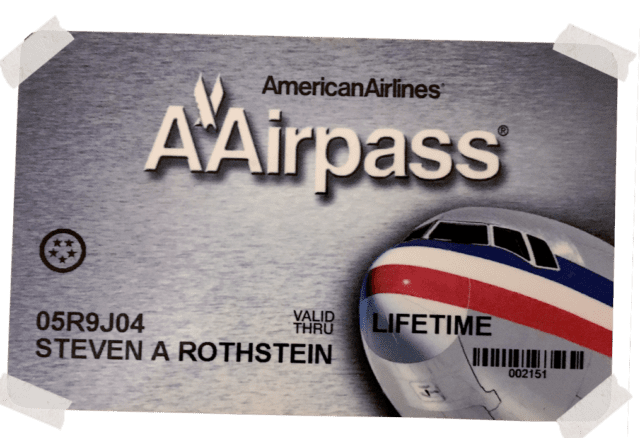
Mr. Steve Rothstein was a Chicago based investment banker and he loved the idea: “Instead of getting interest paid from a bond, you could redeem your returns in air travel.” A very fair deal in his view: “They need cash and they can pay me in miles.” Why not! Right?
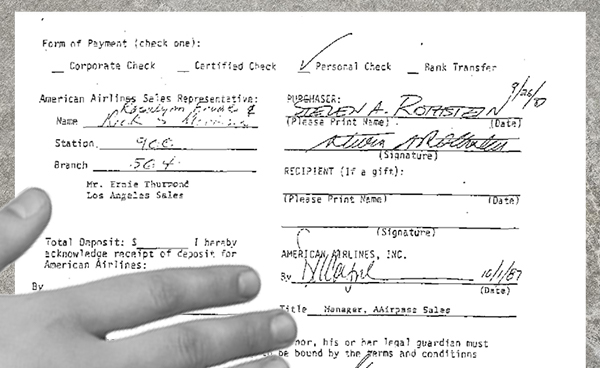
Travel Hacking Itself Got Hacked
Soon American Airlines had to learn the airfare market is not comparable with, let’s say an “all-you-can-eat” buffet or “all-inclusive” vacations where customers would have natural limitations of how much they were able to consume.
When it comes to first class tickets just imagine how many folks are literally ready to go “the extra mile” to profit from such an offer.

Starting from 1987 Mr. Rothstein went many many extra miles with his AAirpass, he booked more than 10,000 flights to anywhere. Sometimes he simply flew somewhere to grab his favorite sandwich. He also frequently just took complete strangers along into first with his companion pass.
He basically used the airlines’ network like a bus…
From Chicago, he reportedly flew:
- 1,000 times to New York City
- 500 times to San Francisco
- 500 times to Los Angeles
- 500 times to London
- 120 times to Tokyo
- 80 times to Paris
- 80 times to Sydney
- 50 times to Hong Kong
Another gentleman, Mr. Vroom from Texas, even took out a loan (!) to finance (!!) the $400k (!!!) – by the time he bought – AAirpass fee.
He flew well above 2 million miles per year thereafter. Mr. Vroom sometimes simply flew to Paris to have lunch and would return shortly thereafter.
The next time AA got into financial trouble was in 2007. Once again, they went through their books just to figure this time the AAirpass program was costing the company too much. What a surprise. American calculated the two top-clients Mr. Rothstein and Mr. Vroom cost them well above $1 million in taxes, fees and lost ticket sales – per year!
What an amazing return on investment for the two of them!
They were miles ahead!!!
The Revenue Integrity Team Steps In
Unfortunately, good things seldom last. The story ended bitter for our unlimited lifetime loyal frequent flyers! Once the airlines’ “revenue integrity team” (what a name…) started to get active, their AAirpasses got revoked.
The airline claimed the reason being “fraudulent activities”. Both clients got stripped of their passes and were told they would never be able to fly on the airline again. Ever.
Nowadays, the American Airlines Airpass is merely known as an all-inclusive membership program that offers elite status, flight discounts, and other rewards. It now comes with an annual fee.
In hindsight this offer was coined one of the worst marketing disasters in human history.
According to an American Airlines spokesman, there are still about 25 valid unlimited passes out there in use as of 2018. It seems therefore unclear if all the unlimited passes got cancelled…
Let me know if you are a passholder please, leave a comment below or shoot me an email, please!
If you want to improve your life with similar or other life-hacks and imagineer your life, please consider to follow me on Facebook or Twitter:
Miles Programs Used as Collateral for Bank Loans
This is all history, so why do I write about the above story at the current point in time?
Well, due to the current pandemic, we have arrived at a similar “situation” once again. Airlines are short on cash! And as before, in 2020 airlines are reaching out to their largest customers and are offering to sell miles directly to them – to secure liquidity.
History doesn’t repeat itself, but it often rhymes.
While in the early 1980’s the largest clients where direct business travelers, the largest clients in 2020 are – yes – you guessed it: Credit card companies with reward systems such as American Express, Chase and others! These large corporations are currently winning big and can purchase points at deep discounts – just to offer them to you later.
American Airlines and United Airlines also ventured out to conduct more innovative financial engineering recently. They are mortgaging (!) their mileage programs with financial institutions to borrow against and “monetize it”. Due to this new way of “banking points” both airlines have recently disclosed valuations of their mileage programs.
The numbers are in the tens of billions of dollars!
Why is this scary? Imagine that both, American Airlines and United would be worth a negative valuation after discounting the value of their points programs…
Here some numbers:
Just the U.S. portion of the AAdvantage program is currently valued around $19.5 billion (subtract that from it’s market capitalization of $5.6 billion…).
Uniteds’ MileagePlus program got valued at $21.9 billion (now compare this with it’s market capitalization of $10.1 billion…).
This is how valuable the reward systems have become and how crucial they are for the industry.
While I don’t believe the airlines will disappear just yet and like that, there’s a certain risk also on the respective banks’ books now. Hope they know what they’re doing. But the main point I’d like to convey today is another one.
Travel Hacking in 2020
Since Mr. Rothstein got his AAirpass, airline loyalty programs have transformed from a way to simply increase customer loyalty to a massive profit center.
The above example of how American Airlines and United are even empowered by the system to “mortgage” these hugely valuable assets – to unlock billions of dollars in bank loans to help survive the pandemic – shows the world the true size and value of their programs.
According to my opinion the most recent developments may lead to the following potential outcomes.
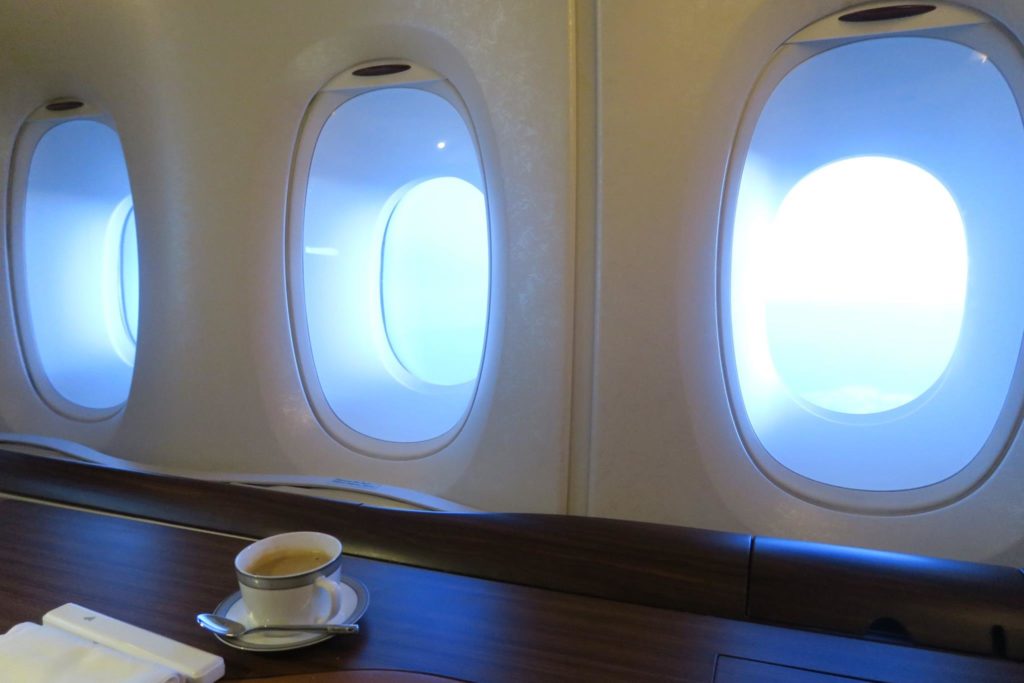
Here my considerations for travel hacking in 2020:
- There will be some sort of “inflation” in point values coming up – your points today are more valuable than your points tomorrow. In other words: The earlier you book your flight, the better deal you can get. Airlines are happy at the current moment for miles holders to redeem points!
- With inflation and more points being “monetized”, the rewards, in terms of points – not in actual value – will move up in the near future. Look out for a changing landscape of reward systems and re-position yourself if needed.
- Buying extra miles could be a true bargain during this period of time. Try to take advantage of it strategically. AA has launched a new offer allowing frequent flyers to purchase miles with up to 100% bonus through Aug. 31, 2020. This offer brings the cost per mile down to as low as 1.71 cents.
- Be sure to understand the involved risks such as prolonged insecurity regarding flight plans, countries having closed their borders, airlines getting stretched, potential airline bankruptcies and still yes: getting exposed to the virus itself.
- If you hold a substantial amount of travel points and miles (like me), make sure you keep them with the right “bank” – or airlines. Some airlines might go bankrupt depending on how long this pandemic will continue. Nobody knows. If your points are with them, you may lose them. One way to secure points is to keep them with the credit card company or bank first and only convert them to miles once you’re about to redeem a flight. Buy points now and buy yourself time!
Maybe as of 2020 we can’t just buy a first class for life pass quite yet, but I’m looking forward to learn more about improving deals coming our way to stay miles ahead.
How do you travel hack in 2020?
Happy travel hacking!
Matt
